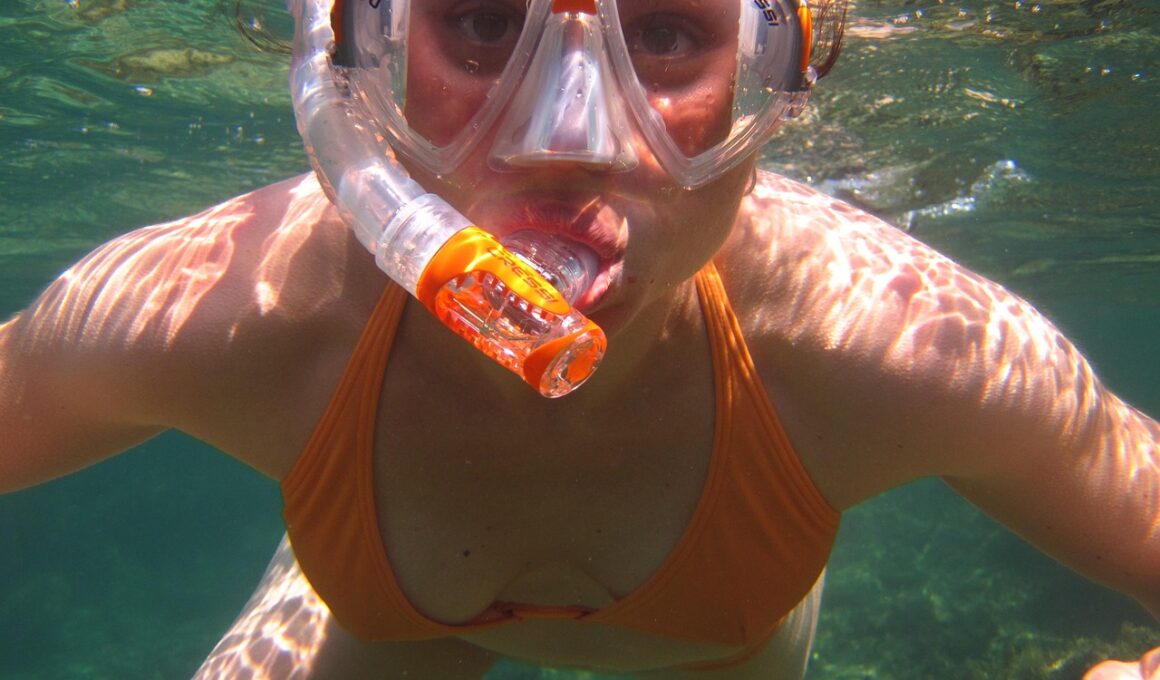Choosing the Best Gear for Ocean Swimming
When selecting the right gear for ocean swimming, comfort and safety should be your top priorities. Ocean swimming can be quite different from swimming in pools due to the natural currents and varying water temperatures. A comfortable and secure swimsuit is essential; opt for a suit that fits well and reduces drag. You should consider materials that offer sun protection and help retain warmth. Many swimmers choose wetsuits for this purpose, as they provide insulation and buoyancy. Additionally, consider shoes designed for water activities; these can provide traction on slippery surfaces and protect your feet from sharp objects. Accessories are also vital; you might want to invest in a swim cap to reduce drag and protect your hair from saltwater. For visibility in the ocean, bright-colored gear may help others see you. Lastly, always bring along safety equipment such as a whistle or a flotation device. These can be life-savers in emergencies, enhancing your overall ocean swimming experience. With the right gear, you can maximize your enjoyment and ensure a safer swimming adventure in the open sea.
Essential Clothing and Accessories
The right clothing can significantly enhance your ocean swimming experience. First, a well-fitted swimsuit is crucial as it should be comfortable for extended use. Choosing the right fabric offers not just comfort but also durability against saltwater. You might find swimwear with UV protection particularly beneficial in sunny conditions. Wetsuits are a popular choice among swimmers in cooler ocean waters. They help maintain body temperature and provide a buoyancy boost, making swimming easier. Additionally, many swimmers prefer wearing rash guards or swim shirts for extra sun protection and to prevent chafing. Accessories like swim caps, especially in surf or cold conditions, play a significant role in keeping your hair free of tangles and reducing drag. Don’t forget about goggles; they protect your eyes while ensuring clear vision underwater. Look for anti-fog and UV-protected goggles to enhance your experience. If planning longer swims, hydration is critical, so consider carrying a water bottle or hydration pack on land to sip before and after your swim. Selecting quality gear tailored for your needs makes all the difference, maximizing comfort while minimizing risks associated with ocean swimming.
Safety should always be at the forefront when venturing into the ocean for swimming. Always check the local weather and water conditions before heading out; strong currents or poor visibility can pose risks even for experienced swimmers. It’s essential to swim with a buddy or inform someone of your plans for added safety. A good rule of thumb is to stay close to the designated swimming areas, as lifeguards typically monitor those spots. Carrying a whistle and a bright floatation device adds layers of safety, providing visible signals in case of distress. If you are swimming near surf, it’s crucial to understand how to deal with waves. Practice entering and exiting the water to avoid getting caught in strong currents. Ensure you stay hydrated, as swimming can be strenuous. Lastly, recognize your limits; don’t push yourself too hard on long-distance swims and listen to your body. Taking precautions for ocean swimming can create a safer and more enjoyable experience. Keep safety gear at hand, make informed decisions, and remember that preparation is key to mastering open water swimming.
Swim Aids and Equipment
Swim aids and specialized equipment can significantly enhance your ocean swimming experience. Items like kickboards and pull buoys assist with improving your stroke technique and overall strength. Flotation devices are essential for those learning to swim in open waters, providing the extra confidence needed. Another vital piece of equipment is a swim buoy or tow float. These brightly colored floats allow you to be visible to boats and others in the water, while also offering a place to rest if needed. For those looking to track their swimming progress or explore, waterproof fitness trackers or smartwatches are invaluable. They can track your distance, time, and even monitor your heart rate while swimming. Another beneficial item is an anti-chafing cream to apply to areas prone to friction against swimwear or wetsuits. This prevents irritation, ensuring a more comfortable swim. Don’t forget to bring along a waterproof bag to store your electronics and valuables while swimming. With the right swim aids and equipment, you can feel more secure and focused in the ocean, allowing for an immersive swimming experience.
When planning an ocean swim, nutrition plays a crucial role in maintaining energy levels. A balanced diet focusing on carbohydrates, proteins, and healthy fats is essential to fuel your body effectively. You should consider eating a light meal or snack rich in complex carbohydrates, like whole grains or fruits, a few hours before swimming. This will provide your body with sustained energy, essential for performance. Hydration is equally crucial. As ocean swimming can feel more strenuous than pool swimming, ensure you are adequately hydrated before entering the water. Carrying electrolyte drinks can be beneficial, especially on hot days or in longer swims. Post-swim nutrition should not be overlooked; consuming protein-rich foods within an hour after swimming aids recovery and muscle repair. Consider snacks like yogurt, nuts, or smoothies designed to replenish your energy stores. Keep in mind that everyone’s nutritional needs may vary based on their fitness level and swimming length. Monitoring your nutrition can significantly impact your swimming performance, allowing you to achieve your goals while enjoying the ocean.
Environmental Considerations
As ocean swimmers, protecting our environment should always be a priority. Oceans are beautiful, but they also face significant threats from pollution and climate change. One essential practice is respecting local marine life and habitats. Avoid swimming near coral reefs or nesting areas to minimize disturbances. Always adhere to park rules and designated swimming zones. When it comes to gear, consider sustainability; many brands now offer eco-friendly swimwear made from recycled materials. Supporting these brands contributes to reducing waste in oceans and encourages better practices in the industry. Decluttering our beaches is another important responsibility. Always carry your trash out and participate in beach clean-ups when possible, as a cleaner ocean benefits everyone. Educate yourself about invasive species in your area and avoid introducing them to new locations. Respecting our environment is crucial; we must ensure future generations can enjoy the oceans as we do today. By being mindful of our actions, we can preserve the beauty of our oceans while enjoying the sport of swimming.
Finally, enjoy your ocean swimming adventure! The beauty and tranquility of open-water swimming can be refreshing, offering a completely different experience compared to pool swimming. Unique wildlife encounters, breathtaking views, and the natural environment all add to the charm of ocean swimming. Setting goals, whether aiming for distance, speed, or simply enjoying the moment, enhances your experience. Exploring new locations can also be exhilarating; various beaches and coastlines each offer unique challenges and beautiful scenery. Remember to practice good etiquette by sharing the water space with other swimmers, paddlers, and surfers. Embrace the thrill of learning new skills like sighting and navigating waves, which can elevate your swimming proficiency. Build connections with the ocean community; joining local clubs can add a social aspect to your swimming endeavors. Share experiences, learn from others, and develop friendships through shared passions. Ultimately, being well-prepared, safe, and respectful ensures that your ocean swimming experience yields lasting memories. Immerse yourself in the ocean’s wonders, engage with nature, and cherish every moment spent in the water.
Documenting your progress can also be motivating. Consider keeping a swim log or using apps to track your improvements. Capture photos of your adventures and reflect on your growth as a swimmer. As you become more experienced, don’t shy away from challenging conditions; they can build resilience and skill. Enjoy the process of becoming a better ocean swimmer, and always remember that the ocean is a magnificent place meant to be explored.


